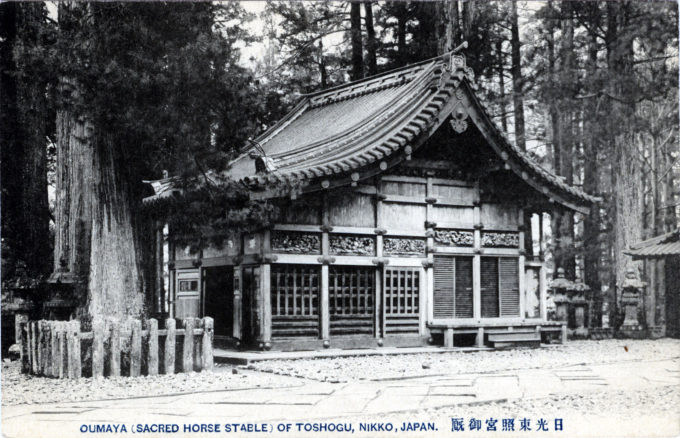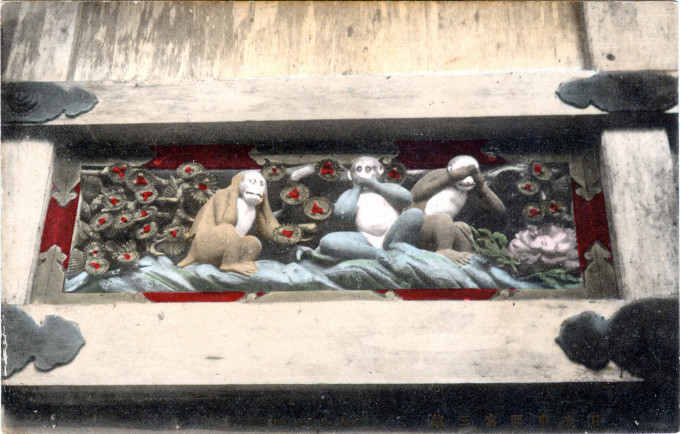
Sacred Horse Stable, Nikko, c. 1920. This is the only unpainted structure in the temple complex and is best known for its carvings of monkeys (see below).
See also:
Nikko, Japan, c. 1910
Mizaru, Kikizaru, Iwazaru (See No Evil, Hear No Evil, Speak No Evil), c. 1910
“The stable of the sacred horse at Nikko is decorated with monkeys. It is believed that on New Year’s eve these monkeys come to life and, dressed up in Shinto-priest’s garments, pay honour to their companion … Formerly monkeys were kept in the imperial stables to (it is wrongly said) keep the horses from sleeping. Artists originally inspired by the monkeys of Nikko have often depicted them in human dress, but the monkeys of the sarumawashi too are always dressed up monkeys.”
– The Animal in Far Eastern Art: And Especially in the Art of the Japanese Netsuke, by T. Volke, 1975

Three Wise Monkeys, Sacred Horse Stable, Nikko, c. 1910. Colorized detail of the stable monkey carvings (although the structure is, in fact, unpainted).
“Immediately under the roof [of the Sacred Horse Stable] are some cleverly executed groups of monkeys, severally represented as closing their ears and mouths and shading their eyes with their hands.
“They are called san goku no saru, ‘the monkeys of the three countries’, i.e., India, China and Japan; those with long hands are evidently Indian, but it is difficult to fix the nationality of the others.
“They are also punningly called kika-zaru, iwa-zaru, and mi-zaru (not hearing, not speaking, and not seeing monkeys).”
– A Handbook for Travellers in Japan, by Basil Hall Chamberlain & W.B. Mason, 1881

